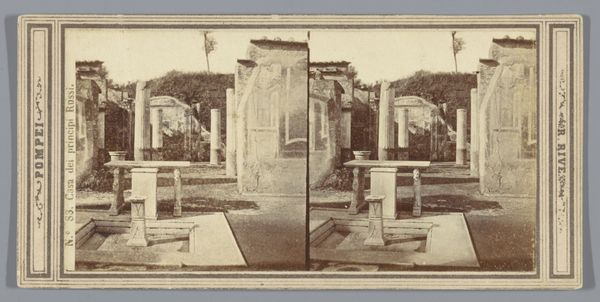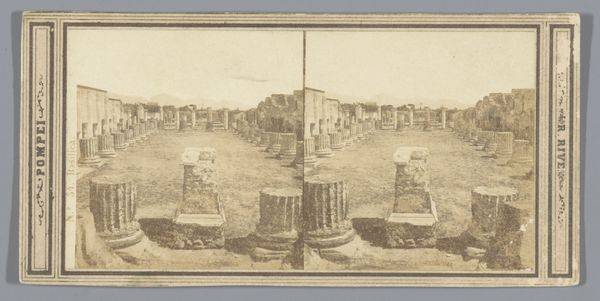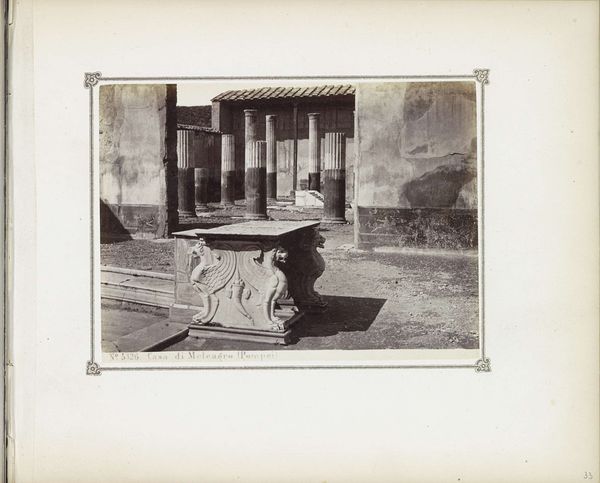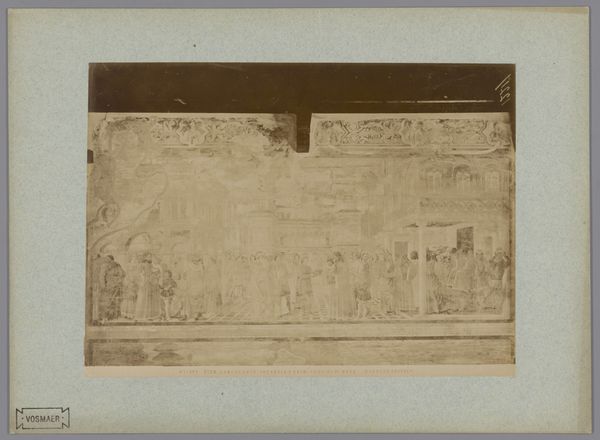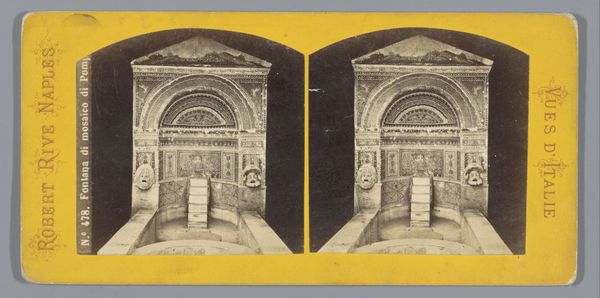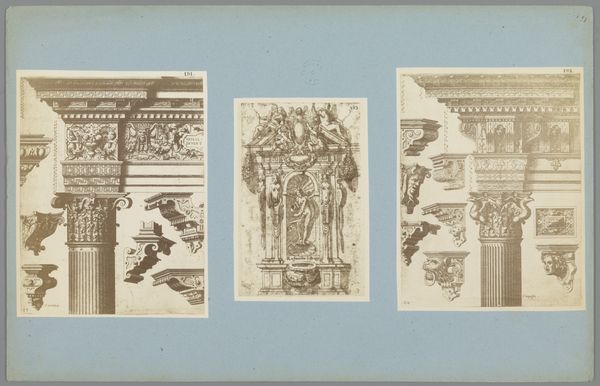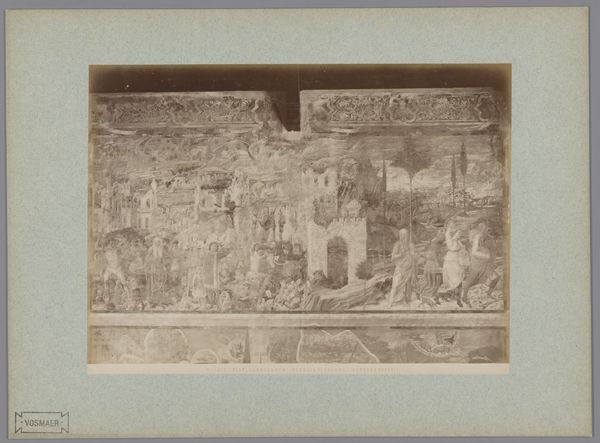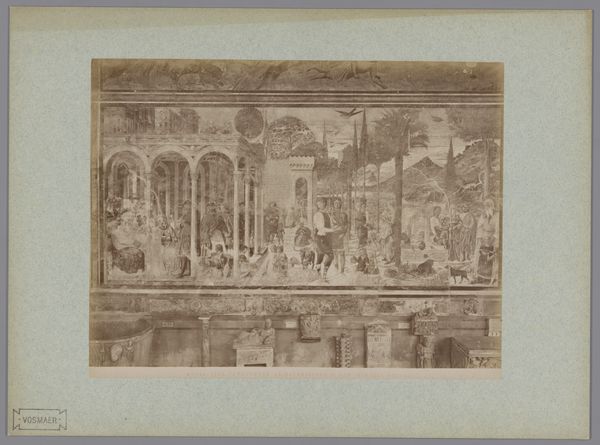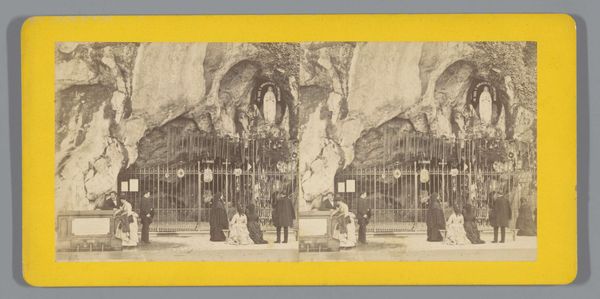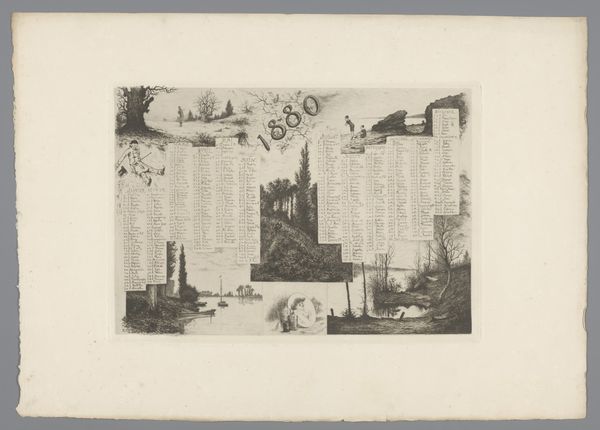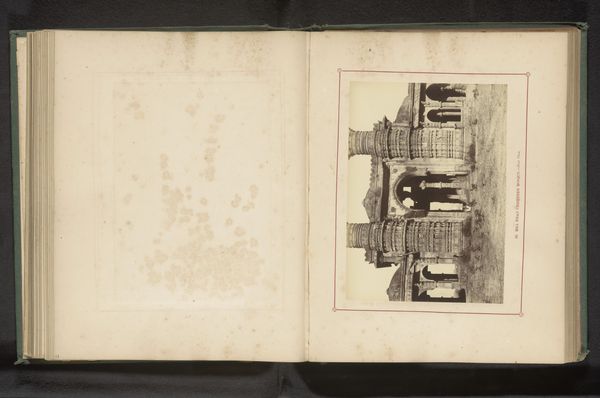
Gezicht op de ruïnes van het Casa di Meleagro in Pompeï c. 1860 - 1880
0:00
0:00
Dimensions: height 83 mm, width 174 mm
Copyright: Rijks Museum: Open Domain
Curator: This photograph, a gelatin-silver print by Giorgio Sommer, likely taken between 1860 and 1880, presents a view of the ruins of the Casa di Meleagro in Pompeii. Editor: It's stunning, really. Even in monochrome, you immediately sense the weight of history, the silent echo of a life abruptly halted. There’s something haunting about it. Curator: Indeed. Sommer's work circulated widely as souvenirs during a period of burgeoning interest in archaeology and classical history among European tourists and academics. Pompeii became a critical site for understanding daily Roman life. These images fueled that interest, reinforcing prevailing Neoclassical tastes. Editor: Absolutely. The columns, the eroded walls—they're not just architectural elements. They speak to the rise and fall of civilizations, the precarious nature of existence. What I find striking are the ornamental details still discernible, like the carvings on that structure in the foreground; are those griffins? They seem almost defiant, preserved after all this time. Curator: You have a keen eye. The visual language here underscores the themes of memory and resurrection, which were popular in that era, and continue to intrigue audiences. There's also the somewhat paradoxical nature of the photographic medium itself documenting the ruins. It becomes another layer of cultural inscription over a landscape already saturated with history. These photos aided and shaped scientific archaeology as well. Editor: Exactly. The ruins, through the camera lens, become almost allegorical figures. The play of light and shadow really emphasizes the absence...the figures gone. Does the presence of that figure relate to the theme in any way? Curator: Sommer did use a figure in his image here. Though in ruin, a city continues to exist through memory and its physical structures continue to convey cultural continuity across vast stretches of time, thus, perhaps Sommer had an intent to show just this with the figure’s presence. Editor: Food for thought, definitely, It is almost like it exists on a stage waiting for life to return to it! Thanks for adding meaning to my thoughts! Curator: Thank you, this insight through an iconographical lens has been enriching and brought new perspectives.
Comments
No comments
Be the first to comment and join the conversation on the ultimate creative platform.
